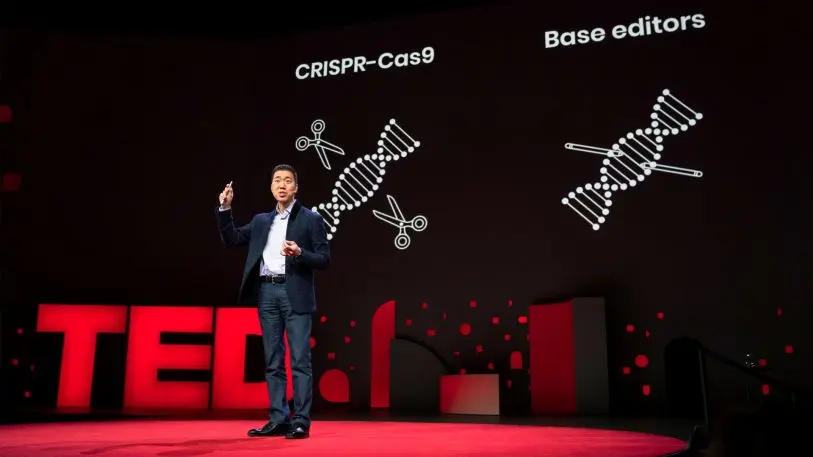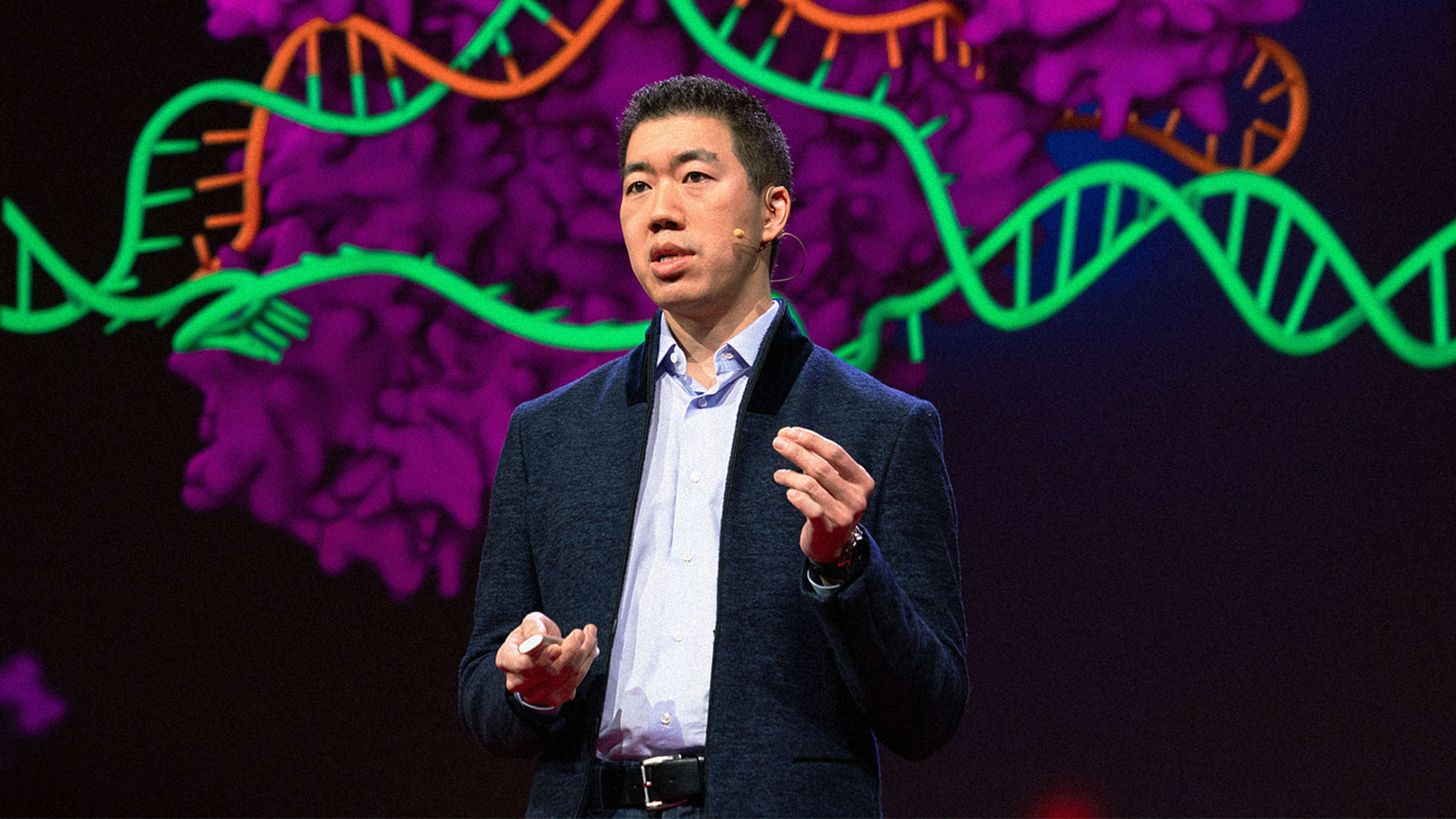Ever since the gene-editing technique CRISPR was commercialized several years ago, it’s been at the center of conversations and controversy around genetically modifying everything from tomatoes to humans suffering from genetic diseases like sickle cell anemia and muscular dystrophy.
CRISPR is a molecule that functions essentially like a pair of scissors that works on DNA strands. When paired with a molecule that can identify certain base pair mutations along a DNA strand, like the inverted A-T pair that leads to sickle-cell anemia, CRISPR can cut them out, theoretically eliminating genetic diseases. The molecule can also make targeted alterations that could produce drought-resistant crops or enhanced super-produce.
Using CRISPR to cut and edit DNA sequences “can be very useful for some applications,” says chemical biologist David R. Liu on the stage at TED in Vancouver. But CRISPR’s applications have fallen short in treating genetic diseases in humans. That’s because, Liu says, such diseases are caused by a single letter swap in a strain of DNA. “Simply cutting the already mutated genes won’t benefit patients, because the function of the mutated gene needs to be restored, not further disrupted,” Liu says.

But in his talk, Liu described how his lab in Cambridge, Massachusetts, is making base editing a true possibility. “Like many scientists, I’ve dreamed of a future where in which we might be able to treat, maybe even cure, human genetic diseases,” Liu says. “But I saw the lack of a way to fix point mutations, which cause most human genetic diseases, as a major problem standing in the way.” Rather than getting defeated, however, Liu began working with the students in his lab to apply his expertise in chemistry to develop ways to perform chemistry directly on an individual DNA base to fix, rather than disrupt, point mutations.
What that necessitated, Liu says, was creating chemically engineered proteins–called “base editors”–that could rearrange the atoms of a DNA bases and “trick” the cells into behaving like a stable base pair. The base editors can attach to CRISPR molecules that identify base mutations that need correcting. Liu’s lab first developed one base editor that could convert Cs into Ts and Gs into As. This molecule could, potentially, address 14% of disease-causing point mutations. It took more experimentation for the team to develop a protein that could do the more complex conversion of converting As into Gs, and Ts into Cs–which could address almost half of all point mutations.
Liu’s lab developed these base editors just a few years ago, and already they’ve been sent to thousands of researchers who have begun to test their efficacy at correcting point mutations in plants and animals. Additional work and testing must be done before base editing can be applied to human diseases, Liu says, but the future he has dreamed of, in which it may be possible to cure genetic diseases, is much closer.
Recognize your brand’s excellence by applying to this year’s Brands That Matter Awards before the early-rate deadline, May 3.
